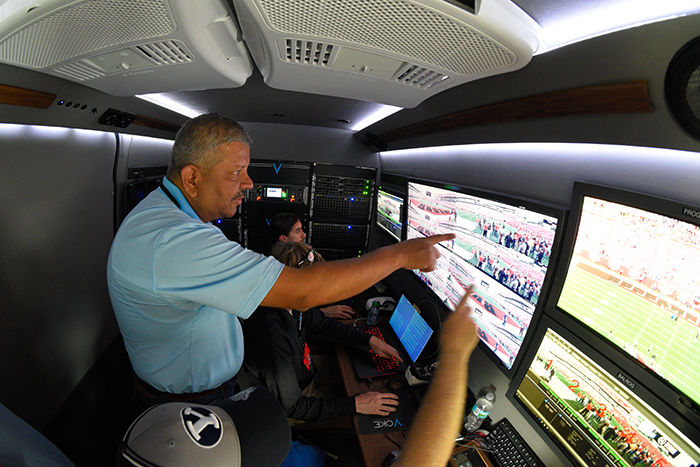Former WSU professors develop virtual reality technology
April 18, 2017
Coming from the world of computer-aided design, former WSU professors Jay and Uma Jayaram had never heard of virtual reality when they moved to Pullman in 1993. Today, they reside in Silicon Valley, working on their virtual reality (VR)-based company.
VOKE VR, which Intel acquired last November, immerses viewers at live events such as football games, fashion shows and concerts. It was the first of its kind, deploying panoramic cameras and allowing people to view live panoramic video without distortion.
“We had developed a lot of expertise in VR,” Uma said. “We were mechanical engineers, but we had tremendous cold experience in software engineering. Jay and I were very hands on. We had developed the core technology along the way.”
Both with Ph.D.s in mechanical engineering from Virginia Tech, Jay was an assistant professor while Uma continued her research at WSU.
They founded the Virtual Reality and Computer Integrated Manufacturing Laboratory (VRCIM) in 1993 with the encouragement of a board member from WSU’s School of Mechanical and Materials Engineering who saw an initial prototype of the technology.
“We said, ‘Let’s see how we can use [virtual reality] for engineering design and manufacturing,’ ” Uma said.
The lab explored using a virtual environment to provide training on the assembly of machinery as large as buildings, such as the Komatsu press machines manufactured in Japan and meant to be assembled onsite.
The technology was also used for virtual prototyping with a movement-tracking glove and ergonomic studies, exploring the use of different machinery parts.
“It was a very hands-on kind of lab,” Uma said. “It was very unique for its time.”
The graphics involved were physics-based and accounted for quantities such as mass and moment of inertia. The computers used at the time cost about $500,000 but had the same processing capabilities as a modern-day laptop or Samsung Gear, Uma said.
The Jayarams worked with and received funding from PACCAR, a Fortune 500 company and one of the largest manufacturers of medium and heavy-duty trucks in the world.
“There was more emphasis on working with government agencies when it came to research,” she said. “Showing them what could be done with this research and using that as a foundation, we then went on with outstanding support from WSU.”
Later on, the Jayarams collaborated with other VR experts to explore further the uses of virtual reality.
“We had a very vibrant consortium that thought to pool resources to investigate virtual reality,” Uma said. “We were a lean and mean team of seven to eight and we did not know to be afraid. We just rolled up our sleeves and started working on the technology.”
Uma said a key element of being a professor while having a successful research program was fearlessness and allowing ideas to be guided by reality.
“You seek out those really big problems. That mentality served us really well,” she said. “A tremendous quality that served us well was that we are very good at the high-level strategic thinking and we are very tactical.”
In obtaining initial venture capital, the Jayarams had to prove the technology’s value. The purpose of their product was questioned constantly until they received funding from Intel’s investment firm, Intel Capital.
“People like the status quo, and they don’t want to think these are the possibilities,” she said. “We had a prototype. They are not willing to extrapolate. It is just a seed.”
At the time of acquisition, Uma said there were four WSU students working for VOKE VR.
“We take pride we made that journey with many other WSU alumni,” Uma said.
{{tncms-asset app=”editorial” id=”5ed9a470-23fb-11e7-9272-a3ec49dd7fbf”}}
VOKE VR first debuted at WSU in 2012 at football games in Martin Stadium, around the time it was undergoing renovations. Regents approached the late President Elson S. Floyd and the athletics department after they saw the technology while walking around Research Park.
“I will be forever grateful to the athletic team, President Floyd, John Johnson and Coach Leach,” she said. “People are so fearless [at WSU]. They don’t see why it can’t be done.”









